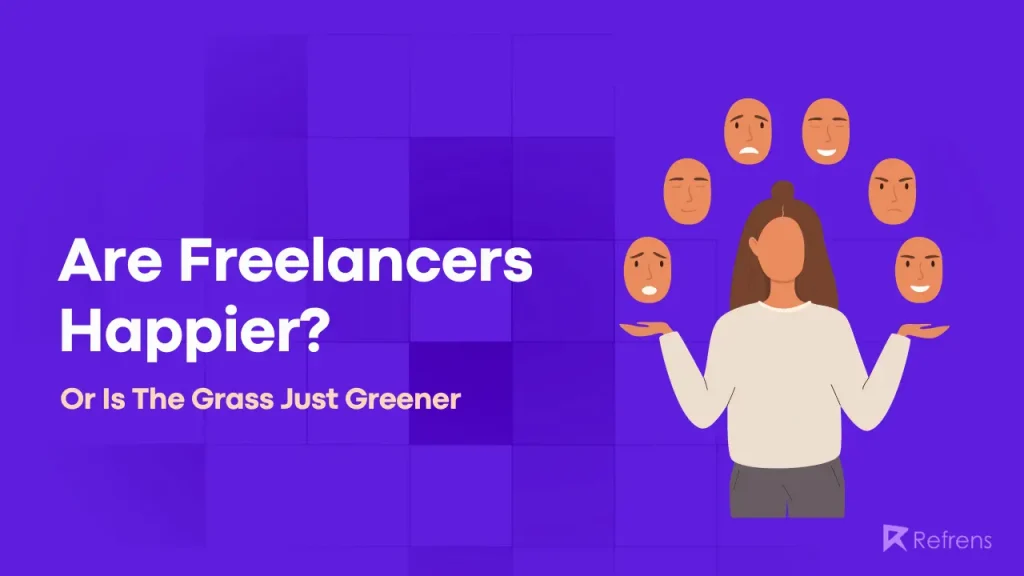The late great Dostoevsky once wrote: “If one wanted to crush and destroy a person entirely, all one would have to do would be to make them do work that was completely devoid of usefulness and meaning”.
This search for meaning and happiness – isn’t what we all seek? Don’t we universally aspire to be perpetually happy? With our work bringing fulfillment across all dimensions of our lives?
However, does freelancing lay down the path for it? The significant number of individuals transitioning from 9-5 jobs to freelancing certainly indicates so. Yet, is this the complete narrative? Or is the grass just greener?
Fueled by curiosity, we embarked on a journey to ask these questions to our freelancer/employee friends and the findings were interesting.
To your knowledge, this study relied on surveys conducted with 182 professionals who have experience in both freelancing and traditional employment roles. While the sample size might not be extensive, the findings are indicative and offer valuable insights.
By connecting with various people, we learned about their views on freelancing. In a broader sense, “freelancing” doesn’t dictate a single way of working, it often suggests an individual working with multiple clients on projects they excel in, following their own schedule.
Since its beginning, freelancing has seen a big increase, driven by various factors. Importantly, technology has made remote work easier, leading to new ways to earn more. This includes setting up multiple iPads for business, which enables freelancers to enhance their productivity and efficiency while working remotely.
So keeping our biases aside, let’s dive deeper to examine this inquiry. But before we do that, first let’s understand the factors that contribute to happiness at work.
What Is Happiness At Work, Anyway?
Happiness at work refers to the sense of fulfillment, contentment, and satisfaction that a worker experiences in lifestyle. It encompasses various aspects of professional and personal lives, which contribute to their overall well-being and happiness.
What are the factors that contribute to it?
1. Work Schedule
A well-designed and flexible schedule can significantly contribute to job satisfaction and overall well-being.
2. Flexibility and Autonomy
When people have the freedom to control aspects of their work, such as when, where, and how they complete tasks, they experience a heightened sense of ownership and empowerment.
This autonomy fosters creativity, innovation, and a feeling of being trusted and valued by the organization.
3. Financial Stability and Income
When workers feel financially secure, they experience reduced stress and anxiety about meeting their basic needs and obligations.
A steady income provides a sense of security and peace of mind, allowing individuals to focus more on their job responsibilities and professional growth.
4. Work-Life Balance
When workers can effectively balance their professional responsibilities with personal and family commitments, they experience reduced stress and burnout. Having the time and flexibility to nurture relationships, pursue hobbies, and take care of their well-being fosters a sense of fulfillment and overall satisfaction.
A healthy work-life balance also allows individuals to recharge and return to work with renewed energy and focus, leading to increased productivity and creativity.
5. Job Security and Benefits
Employees have a sense of job security, knowing that their positions are stable and their contributions are valued, and they experience reduced anxiety about their future and financial well-being.
Additionally, workers benefits such as health insurance, retirement plans, paid time off, and other perks contribute to overall job satisfaction.
Now that we know what makes people happy at work, let’s take a closer look at freelancers – who are they exactly?
Demographics
This study kicks off by examining the demographics of these professionals.
We analyzed data based on gender and age. Additionally, we delved into the primary reasons that led respondents to choose freelancing as their career path in the first place.
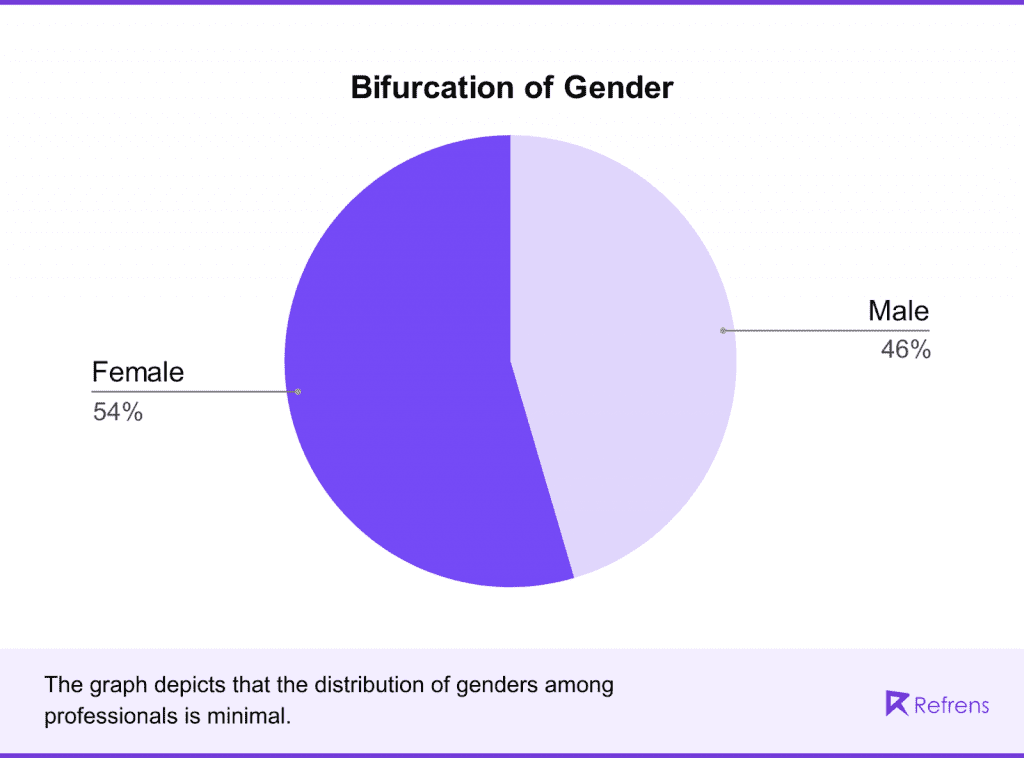
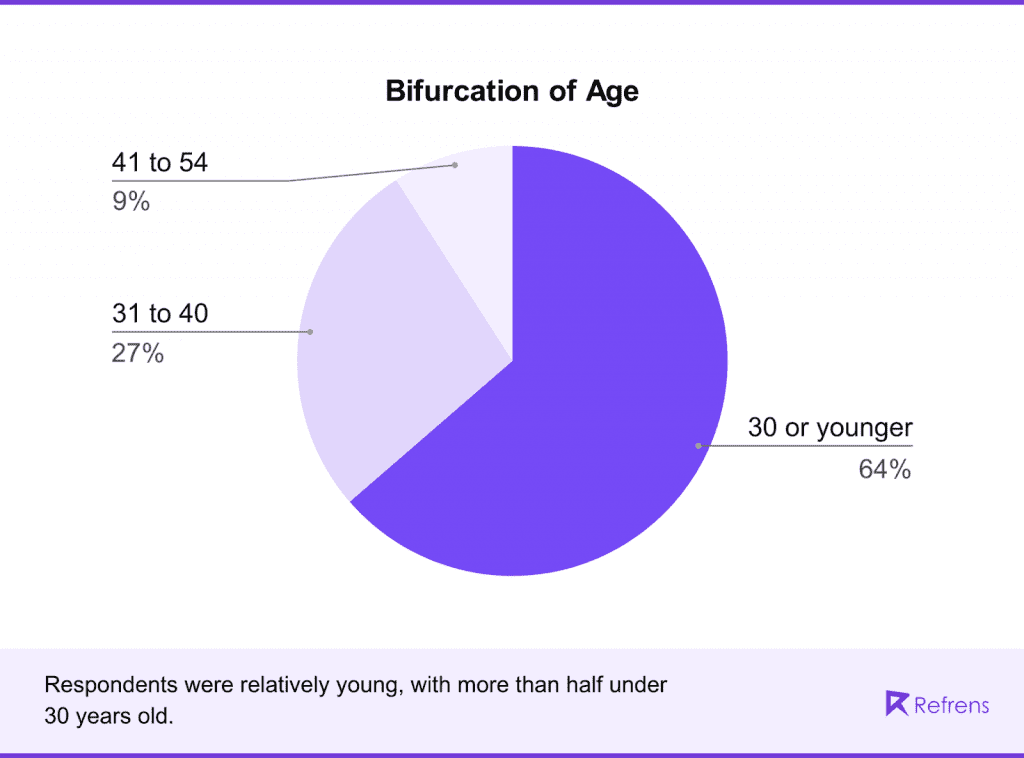
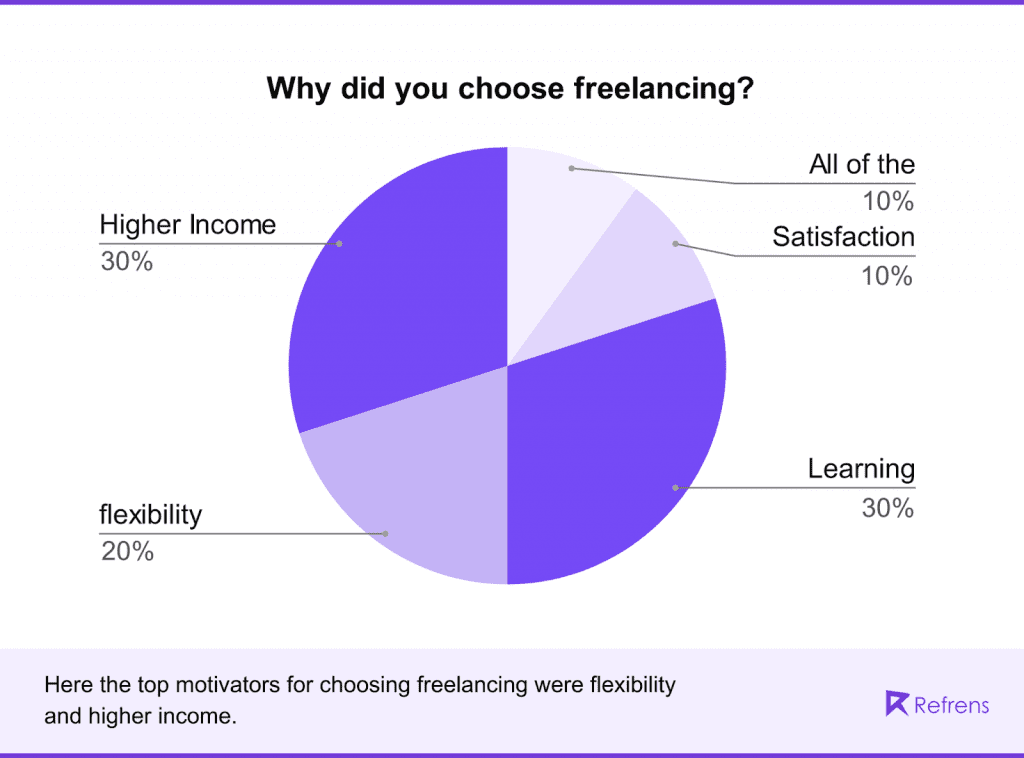
While there didn’t seem to be any major gender trends in the freelancing game, there was a distinct trend when it came to age. Overall, respondents were relatively young, with more than half under 30 years old.
Members of this demographic inevitably benefit from the increased flexibility that freelancing can provide. In fact, the top motivators for becoming a freelancer were increased flexibility, higher income, better learning followed by increased satisfaction.
Now that we know who these professionals are, let’s find out why freelancing may appear to be the happier choice at first glance.
What Could Contribute to Freelancing as a Source of Happiness?
Freelancing can be a significant source of happiness for many people. The flexibility and control it offers over your work schedule and projects can make you feel empowered and content.
You get to decide when and where you work, allowing you to strike a balance between your personal life and career. Pursuing projects you are passionate about can bring a sense of fulfillment and joy, as you’re doing work that aligns with your interests and skills.
Moreover, freelancing can lead to higher job satisfaction because you get to see the direct impact of your efforts.
As a freelancer, you build relationships with clients and witness the positive outcomes of your hard work. This sense of autonomy and responsibility can boost your confidence and happiness in your professional life.
While Freelancing requires overcoming challenges. and grow personally and professionally can add to the overall satisfaction and happiness you experience.
Although the presented outcomes are quite evident, we conducted a more in-depth exploration to uncover the fundamental causes.
Comparison Between Work Schedules of Freelancers vs. Full-Time Employees
While freelancers may not adhere to the conventional 9-to-5 schedule of traditional employees, they still operate within the same calendar weeks as everyone else.
In this section of the study, we inquired about their daily and weekly working hours and compared their responses with those of respondents in full-time salaried positions.
Presented below is a distinct comparison of their respective working hours.
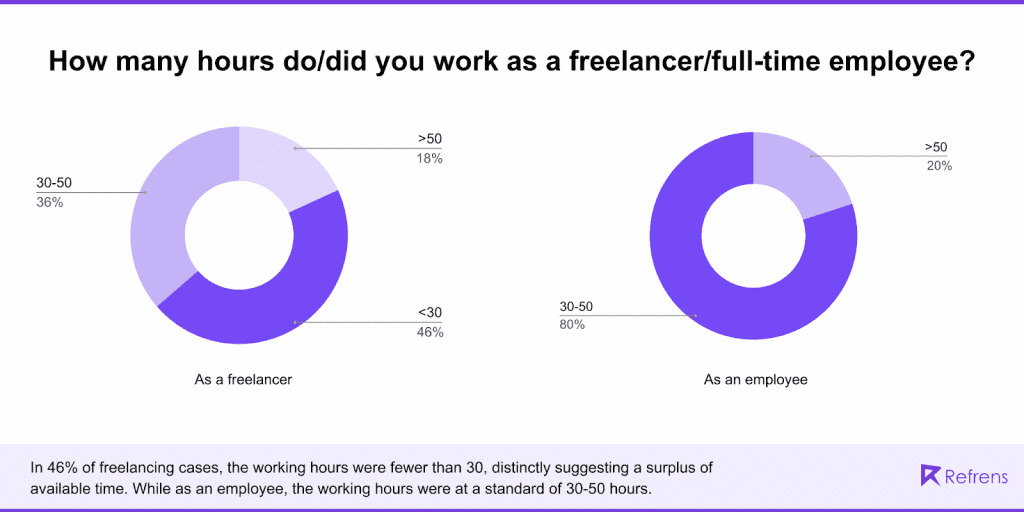
According to the study, freelancers indicated working significantly fewer hours in some cases and much higher in others. While there seems to be a pattern in the working hours of traditional employees, freelancers working hours are really random.
We also inquired with freelancers about their most productive hours during the day. The findings revealed that many freelancers had extended working hours with intermittent breaks, and in some cases, they worked until midnight.
Now this setup might not be comfortable as some individuals might find working odd hours or at any time of the day to be tiring.
On the other hand, most full-time employees still concentrate their working hours within the standard 9-to-5 range, which is preferable for those who prefer set daytime working hours.
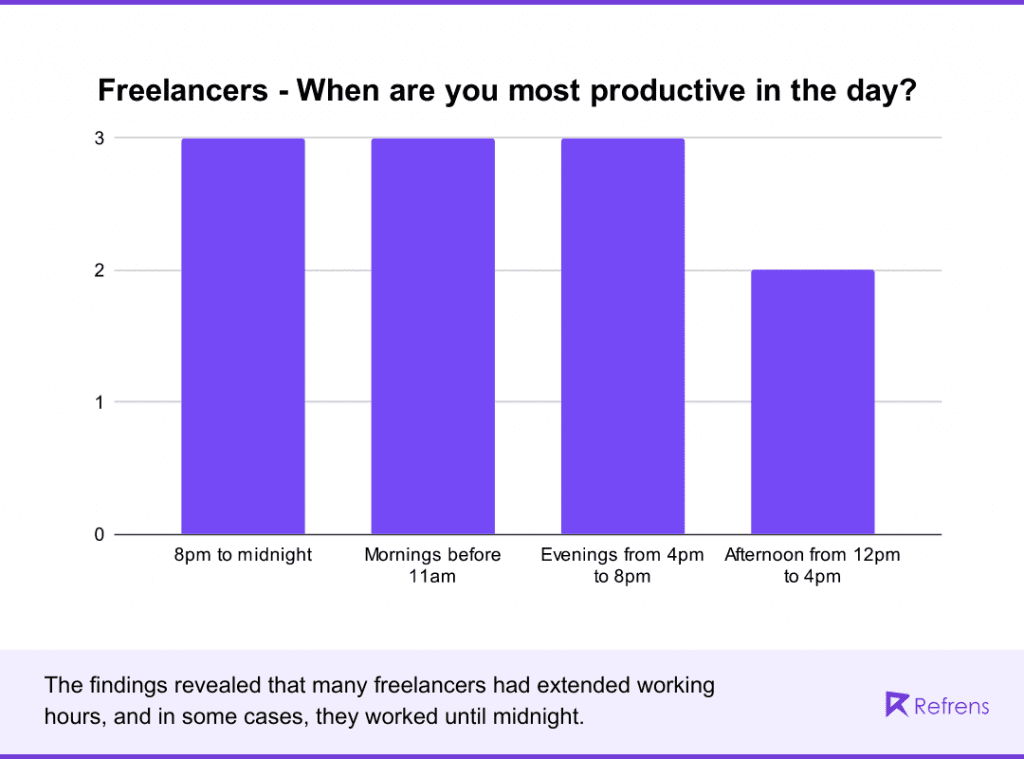
Although freelancers had the advantage of deciding when to allocate their free time, it didn’t necessarily mean they had more of it. Interestingly, freelancers were almost 50% more likely than full-time employees to work for 10 or more hours on an average working day.
Comparison Between Financial Stability and Income of Freelancers vs. Full-Time Employees
Maybe an extra motivating factor is in play here, as more hours worked often lead to higher earnings for freelancers. This part of the study compares the approximate hourly wage of freelancers and full-time employees.
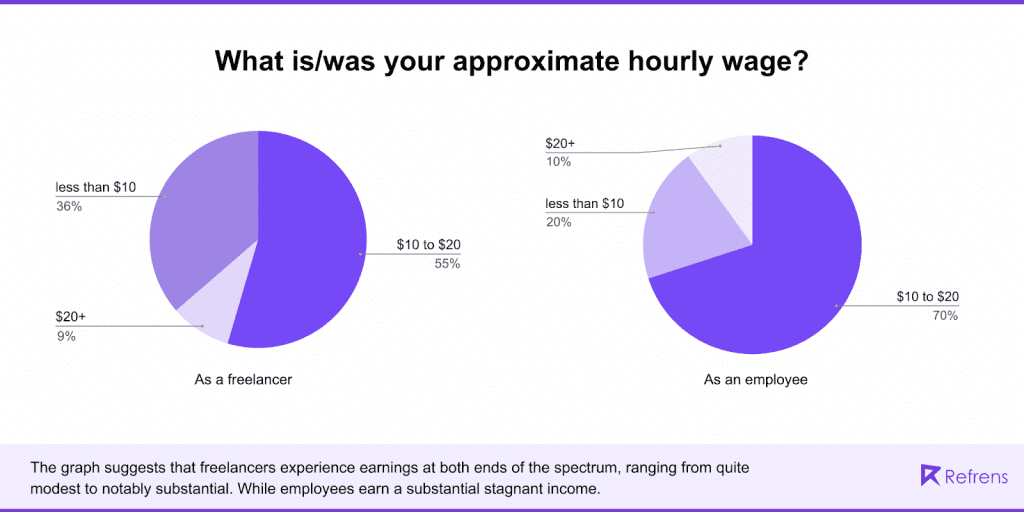
On average, freelancers reported earning $10-$20 per hour. Either the income was too low or significantly higher. In contrast, salaried employees receive a consistent increase in payment amounts.
Despite the likelihood of freelancers working longer hours on most days, they were also twice as likely to work six hours or less on other days, suggesting less predictable and more inconsistent schedules and incomes compared to full-time employees.
It is also important to consider that freelancers’ income is pre-tax, and self-employment tax works differently. Following financial tips for freelancers, such as understanding self-employment taxes, can help manage these challenges. Self-employed individuals are subject to taxes as both an employee and an employer.
Additionally, freelancers have to cover medical insurance expenses out-of-pocket, and they don’t have access to typical employer benefits.
Comparison Between Work-Life Balance of Freelancers vs. Full-Time Employees
When evaluating the feasibility of adopting a different working style, another essential aspect to consider is the elusive work-life balance. The subsequent research delves into a comparison of how freelancers and full-time employees utilize their time outside of work.
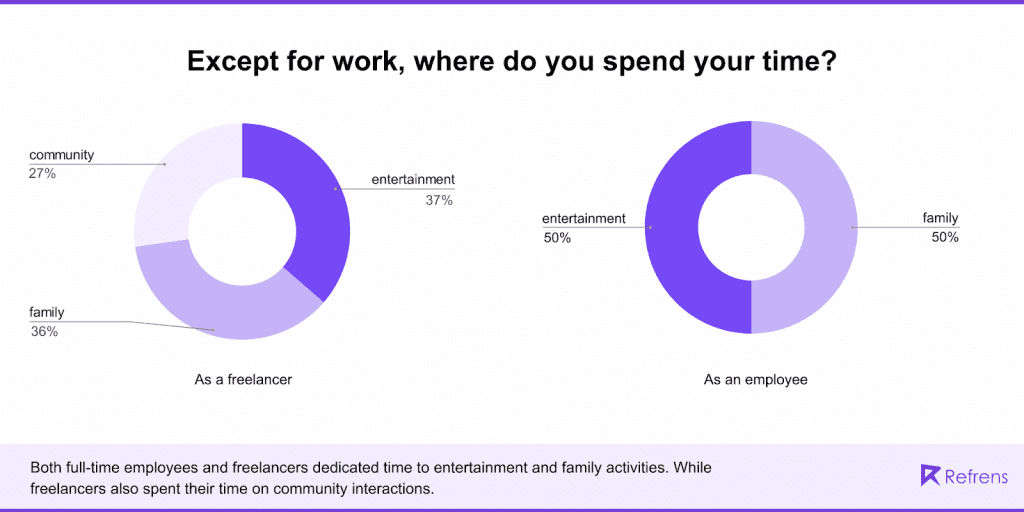
A significant discovery in this context is that, aside from friends and family, freelancers allocate time for community engagement, which is crucial for their livelihood. In contrast, employees often have more time for family due to their colleagues serving as their community.
Apart from that, both full-time employees and freelancers dedicated time to entertainment and family activities.

So, what’s the verdict?
Our study finds freelancers are drawn to flexibility and autonomy but face inconsistent income and lack of benefits. They often work longer hours, questioning true work-life balance. Financially, Freelancers have varied earnings and extra responsibilities like self-employment taxes and healthcare costs, which may not ensure stability. Learning how to set competitive rates as a freelancers can help manage these financial challenges. Freelancers network more through community activities, while full-time employees have more family time.
Neither freelancing nor traditional employment guarantees happiness; it depends on individual circumstances. Success in either path requires hard work, creativity, and meaningful relationships. The key question is, “Which field do you want to tend?”

